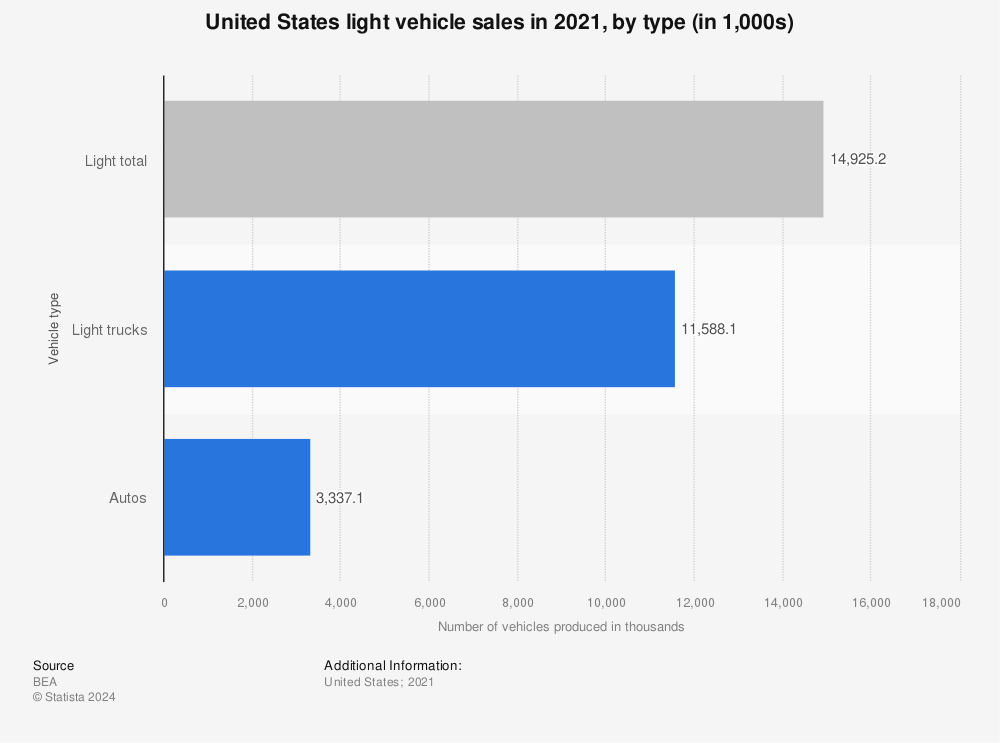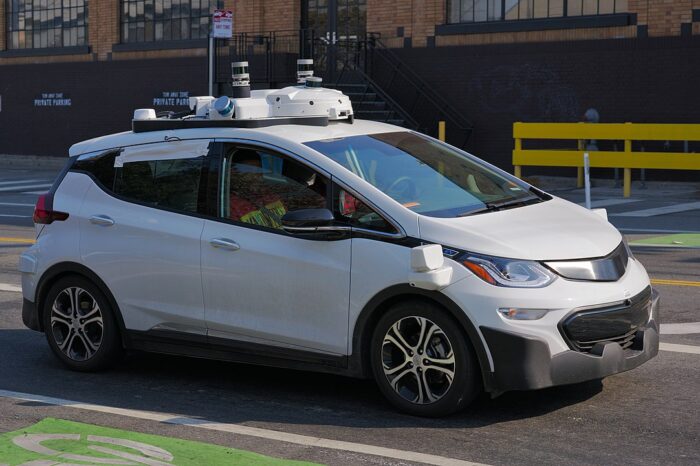GM Charges up a New All-Electric Hummer, but Who’s Buying?

General Motors Co. is bringing back the Hummer, but with an all-electric twist: it’s an EV. While the idea of an electric Hummer may sound a bit oxymoronic, GM is nonetheless planning to revive the controversial, military-inspired behemoth. The GMC brand will use the Hummer badge on an upcoming electric pickup, slated for a 2022 launch. The big announcement is expected to happen during an upcoming Super Bowl commercial February 2nd, featuring LeBron James.
Looking at recent total light vehicles sales in the U.S., light trucks (meaning pickups, SUVs, and crossovers) accounted for a whopping 72% of the consumer market. There is clearly a big market for larger vehicles: consumers love them, and they spell great profit margins for the OEMs.

Find more statistics at Statista
On the flip side, you’ve got EVs. While demand has been steadily rising in certain coastal markets, they’re still trailing behind SUVs. Plus, legacy manufacturers have struggled to make them profitable, due to sky-high battery and development costs. One potential solution? Aim for high-end buyers. As with the original line of Hummers, the new EV version likely won’t come cheap. GM’s plan is to design the new Hummer with off-roading in mind, and sell it in small volumes to EV buyers who don’t mind paying a premium.
A Potential Win for the Environment
It’s a big win for the environment any time a major automaker decides to electrify a model. That being said, simply cramming an electric motor into a studio apartment on wheels isn’t an environmental panacea. What is beneficial, is that GM is aiming for the pickup market. Electrifying trucks and pickups is a highly utilitarian move, due to the powerful torque provided by electric motors. That means buyers get some serious towing/hauling capacity. This could increase EV adoption in a sector known for such abominations as rollin’ coal. Today it’s a wide open market, with models like Tesla’s Cybertruck and Rivian’s R1T not yet on the roads. Another advantage a Hummer has over something like BMW’s i3 or Nissan’s Leaf is there’s no shortage of places to hide a large battery.
Don’t Forget the Grid
While electrifying trucks has some real advantages, there are still a fair amount of drawbacks. An all-electric Hummer is still a Hummer. Sure, it won’t be blasting out diesel fumes while earning single-digit miles per gallon, but it’s still a massive beast of a vehicle. The truck’s huge and heavy footprint will mean far fewer miles per charge, and the electricity in our grid still isn’t entirely produced in the most climate-friendly ways. So while the Hummer could host a huge battery to provide ample range, there may still be an unforeseen environmental cost to keeping this BEV charged. This huge stature also means the Hummer will still be a real danger to any pedestrians in the event of a crash.
CoMotion’s Take: Who’s This For?
General Motors has dipped its toe into green trucks before, but only with limited success. The late 2000’s Tahoe Hybrid was panned for getting only marginally better mileage despite costing $24,000 more than the standard Tahoe LS. The truck, and its rebadged Cadillac and GMC siblings never sold in any meaningful quantities, leading GM to discontinue all hybrid SUVs after the 2013 model year.
It’s unclear whether GM is really betting on an electrified future, or if this is all just greenwashing. Regardless, if this move gets some SUV fans to go electric, or simply shifts consumer perception on EV capabilities, it can’t be all that bad. If GM sees success in selling its electric Hummer, the automaker might make a larger push to electrify the rest of its lineup. The real question is: who is this vehicle for? Is the kind of person that wants a 7,000+ pound truck to take off-roading on the weekends the same type of person that not only wants to embrace electricity as an alternate fuel, but has the deep pockets to do so? Only time (and sales figures) will tell.






